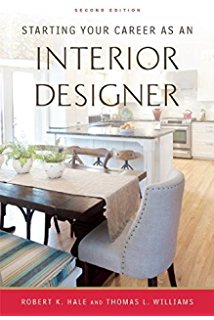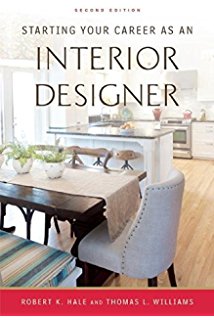
It took me two months, on and off, to read this book. I received it as a late birthday gift in November; started reading it in December while traveling; put it down for a few weeks then; picked it back up in February. It’s quite an intensive book and not the type you can finish in a sitting. It’s educational; packed with interesting information and advice and; the authors, often relatable. I also found it enlightening and funny. It’s conversational so please don’t expect Mills andBoon imagery. It’s a heavy book especially when you’re reading along with a pencil and making notes next to each paragraph hmph. I would recommend this book as a Sunday read. Sundays are the perfect days to prepare for your week and invest in something that will push you further in your career or schooling, well atleast that’s what Sundays are about for me: spiritual and mental self care. If you can’t do Sundays, then 30 minutes to an hour in the evenings also worked really well.
This book is marketed as the business bible for Interior Design. Having obtained an Interior Design qualification, I know just how little we are taught about the business side of this field. Apart from assignments on fees and conducting your first client meeting, very little is discussed about what we actually need to know: taxes; finding worthwhile premises; waste-of-time clients; structuring a design business; hiring staff etc. This book does a marvelous job at taking an interior designer through a journey of diving into business. The information is also accompanied by personal stories shared by Robert and Thomas of their experiences in the design and business world. Find out more about their design firm, Hale Williams Interior Design, here.

Call me behind but I had no idea about these two gentlemen before reading this book and had I not received this book as a gift, I may not have ever known about them. There are thousands if not millions of interior designers in the world so granted I cannot know about every single one, but I do believe that this particular team can afford to update their website and invest in some SEO advertising because their body of work is important.
The Back Cover
Starting Your Career as an Interior Designer contains all the necessary tools and strategies to successfully launch and grow a professional design business in the competitive world of interior design. Drawing on the authors’ extensive experience, this book includes case studies, and personal anecdotes that help teach you how to: * Choose a design field * Obtain and keep clients * Garner referrals * Market and position your business * Bid competitively on projects * Manage sales * Organize a budget * Manage start-up costs and cash flow * Promote your business * Branch out into product and architectural design * Design within a retail environment * Set pricing guidelines * Sell to your target demographic * Set up your office Readers will find a history of the business side of interior design as well as various career tracks available to today’s budding entrepreneur. This updated second edition also examines the current state of the interior design industry, and what’s in store for the future of firms. Any early career interior designer or student looking for practical advice on the ins and outs of running a design firm will need this one-stop guide. (AllWorth Press)
Snippets of inspiration and worth
Here are a few of the snippets of information which I underlined in a fury:
- Understanding Design Segments
When taking on a non-residential project, you’re not designing for an individual or a family; you are designing for a group whose employees and clients must feel alert, professional, and productive. Organization and efficiency are essential.
Most commercial clients aren’t interested in remodeling their workspace every year, or even every five years, so be prepared to develop design schemes that span the test of time.
To land a commercial project, you must exude the personality of the business.
Here they discussed that the relationship you foster with a commercial client must be more formal than that with a residential client and that you should always be within the parameters of a client’s corporate culture.
- Plunging off the Designer High Dive
In anything you do, your desire to succeed must be on par with your talent, business acumen, and charisma. This means that if you’re not tenacious in this industry, you’re not trying hard enough.
- Defining your Dream
One of the worst mistakes you can make is undervaluing your services. It is crucial that you understand the market and your worth in it. Don’t be afraid to raise your rates a little bit… Remember don’t raise your fees $50 an hour; raise them $10 an hour. Every added percent goes to the bottom line.
- Marketing your Business
Marketing is divided into three major areas: networking, public relations, and advertising.
If you haven’t heard, effective advertising is the repetitive delivery of a consistent message involving a product people want.
While you do good work, stay dialed in to what’s hot in the design world and “frame” one of your projects for the media.
Your brand can be based on anything you want, but you have to have a clear idea of what ideas or images you would like to conjure in the public eye. Ask yourself what words exemplify your design business.
- Building your Village
Hourly billing usually occurs after the client has used all of his or her designer retainer.
This chapter was a ‘come to Jesus’ moment for me. I realized immediately that I was undercharging my clients. My retainer was next to nothing and I wasn’t charging enough hourly once it had finished. I came to the conclusion that I was losing money on projects and then becoming frustrated with the clients, not overtly, but atleast to my diary and my mom 😦
- Client Management
Never do favours
If you discount a client’s work for any reason, make sure that they know that you have. Make sure that they know you have given them a bargain by invoicing them then writing that it has been discounted.
This chapter is integral for learning how to build relationships with your suppliers and clients. If for no other reason, then you should purchase this book for this chapter and Chapter 6: Defining your Dream: Understanding Models, Pricing, and Fees.
Final Analysis
I underlined a whole lot more but without giving you the book, these are some of the points I took and ran with.
This book is targeted at an American audience, but the question is how can I as a South African benefit from this? Wholly, is the answer. Regardless of differing tax and business laws as well as interior design boards and institutions, there is still a great deal of knowledge that is tailored to our field. The countries and continents may vary, but this book will lead you to investigate and invest in as much knowledge as you can garner about the South African design industry.
Would I recommend this book to an interior designer who is not even sure about going into business? Yes. The purpose of this book is to show you who you are. There are surveys and questionnaires that will enlighten you about your business acumen and subconscious desires. You may find after doing the test that you do not want to go into business, but this is the type of knowledge you can carry into any field or career experience. Don’t knock it too soon.
Is it an easy read? No. But learn to be patient with yourself. Like I said, it is information intensive but take it slowly and go through each chapter, but especially those most relevant to your struggles, with a fine tooth comb.
I will be rereading this book in about three-four months to take stock of what advice I have used and failed to use and also to give myself some redirection in my Interior Design business. At the end of the year, I’ll also be writing on my first full year in business and what I’ve learned. This book will come in handy once again in structuring that piece. Look out for that.
So, that’s a definite yes from me.
:)x B
#BWithTheBooks #BWithTheMentalCapacityStretching
